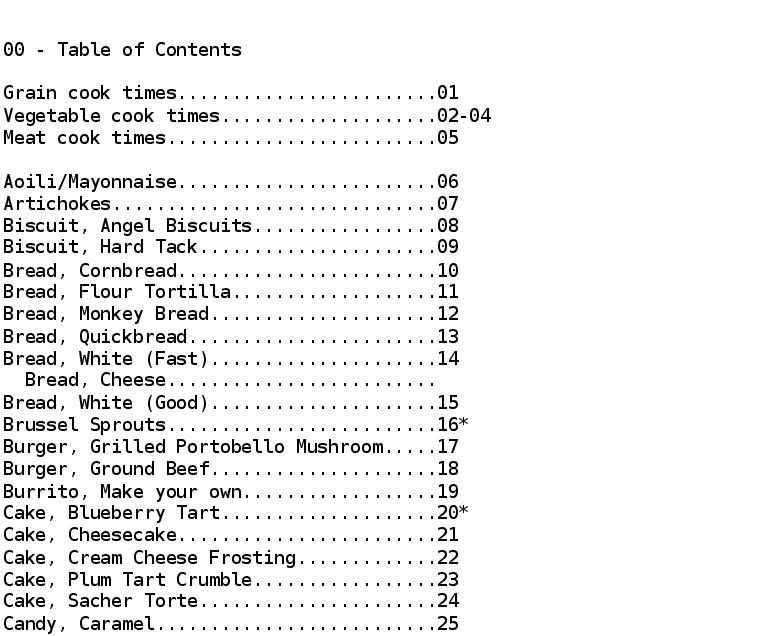
Today's hack-a-day project was the Cookbook 2.0. I wrote a collection of my recipes in 2020. I've updated it with what I've learned in the last 5 years. Among other things, it has 57 new recipes.
You can read it online in a couple formats.
Enjoy!

Today's hack-a-day project was the Cookbook 2.0. I wrote a collection of my recipes in 2020. I've updated it with what I've learned in the last 5 years. Among other things, it has 57 new recipes.
You can read it online in a couple formats.
Enjoy!
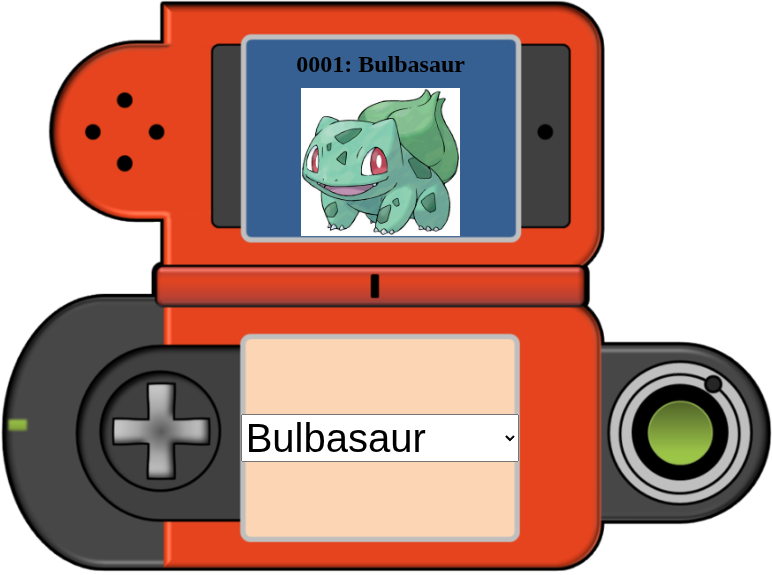
Today's hack-a-day project was the Pokédex -- the fictional companion that tells you about pokemon in the game. My main goal was just to get the info into a reasonable database format, but along with way I built a little viewer too.
The plan is to make some kind of art game where you do pokemon fanart, a coloring book, or even a tracing game in the coming days. And now I'm ready, with art of each pokemon on hand.
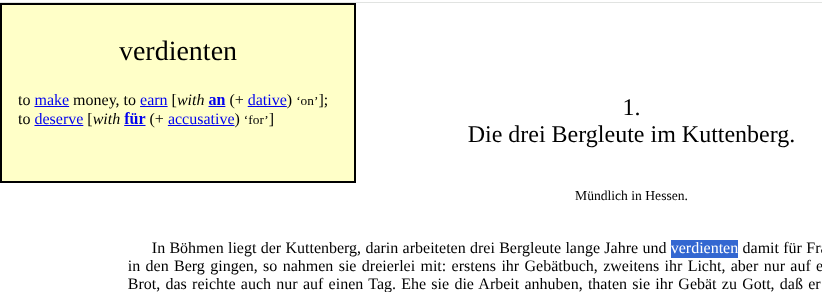
Today's hack-a-day project was the German Language Reader. It shows you the text of "German Legends" by the Brothers Grimm. Yes, the same brothers known for "Grimm's Fairy Tales" and perhaps less-so, the first dictionary.
If you highlight a word, you get the definition in english.
You can try it online. As usual, source code is on github.
I had hoped to have a German mode, but the German wiktionary API has been down for a week!
If you're technically inclined, it's not too bad to substitute in your own book. You'll need it in TXT format (to extract the words), and HTML format (to display).
I'm happy with this project, although I am posting it on the 10th, quite a bit late.
I had some minor help from Claude.
Enjoy!
Yikes, been having some back pain, and the past few days it's been tougher to work. I've started four projects in four days, without too much to show for it.
Today's hack-a-day project was Reverse Vibe Coding. I sometimes use LLMs such as Claude for "vibe coding", mostly on throwaway type projects. It didn't seem fair for that to go only one way, so today I offered to vibe code for Claude -- it picks what I should make, and I code it up for Claude.
The result is the Conversation Flow Visualizer. This graphs when new topics come up in conversation, and what they are.
Frankly I think it's dumb and useless, but Claude is the boss, so there ya go! Can't pick who you work fo... okay, I guess I could this time.
In any case, it was pretty relaxing to be a junior dev and just do as I'm told for a bit, honestly. Easy win.
I honestly think this would be a good way to learn a new programming language or a new library.
Peace out!
Hack-a-Day is my self-imposed challenge to do one project a day, for all of November.
How do you render 3D graphics? Here's a picture of a cube:
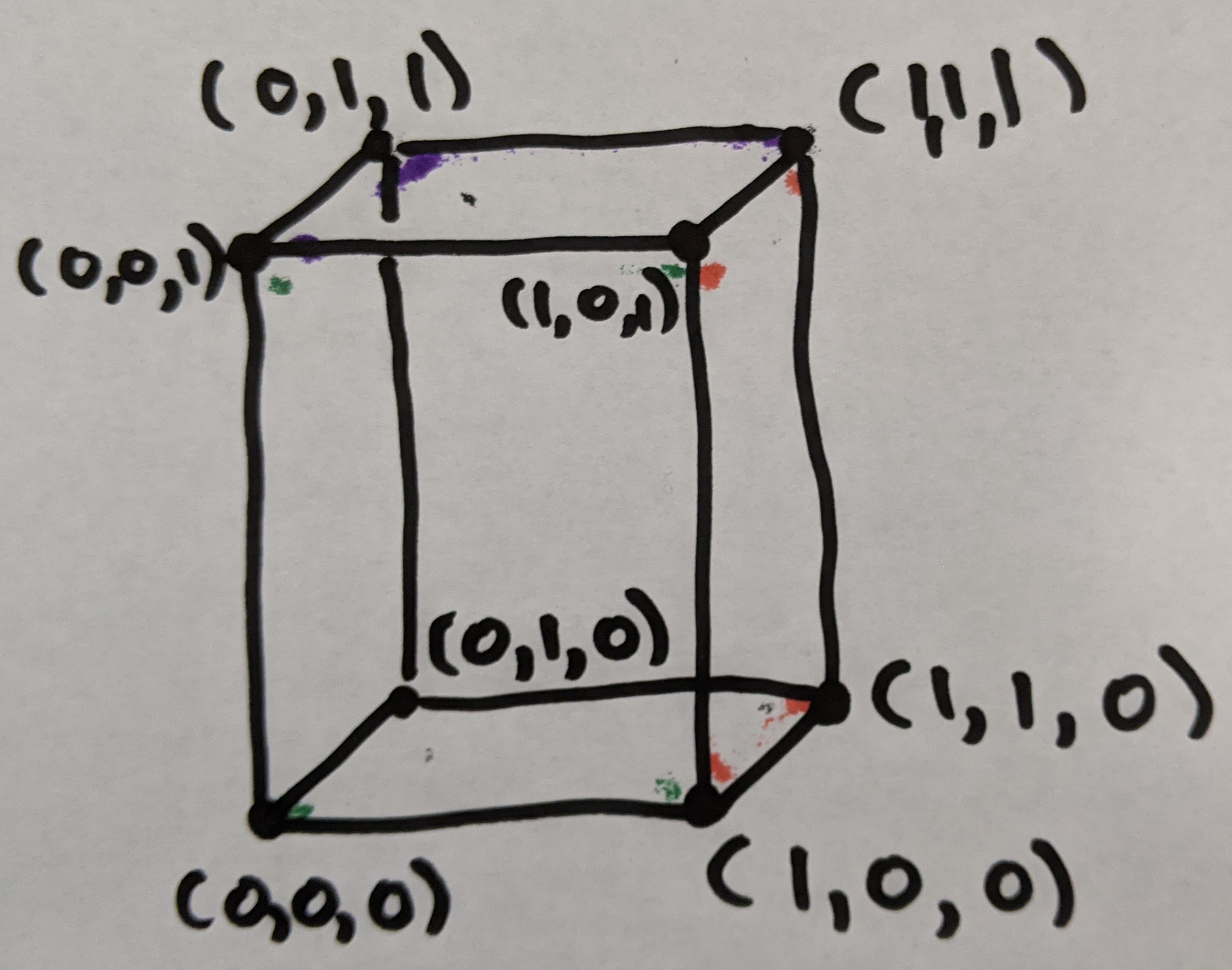
But when you draw it on paper or a screen, it's flattened. All you see are these three faces.
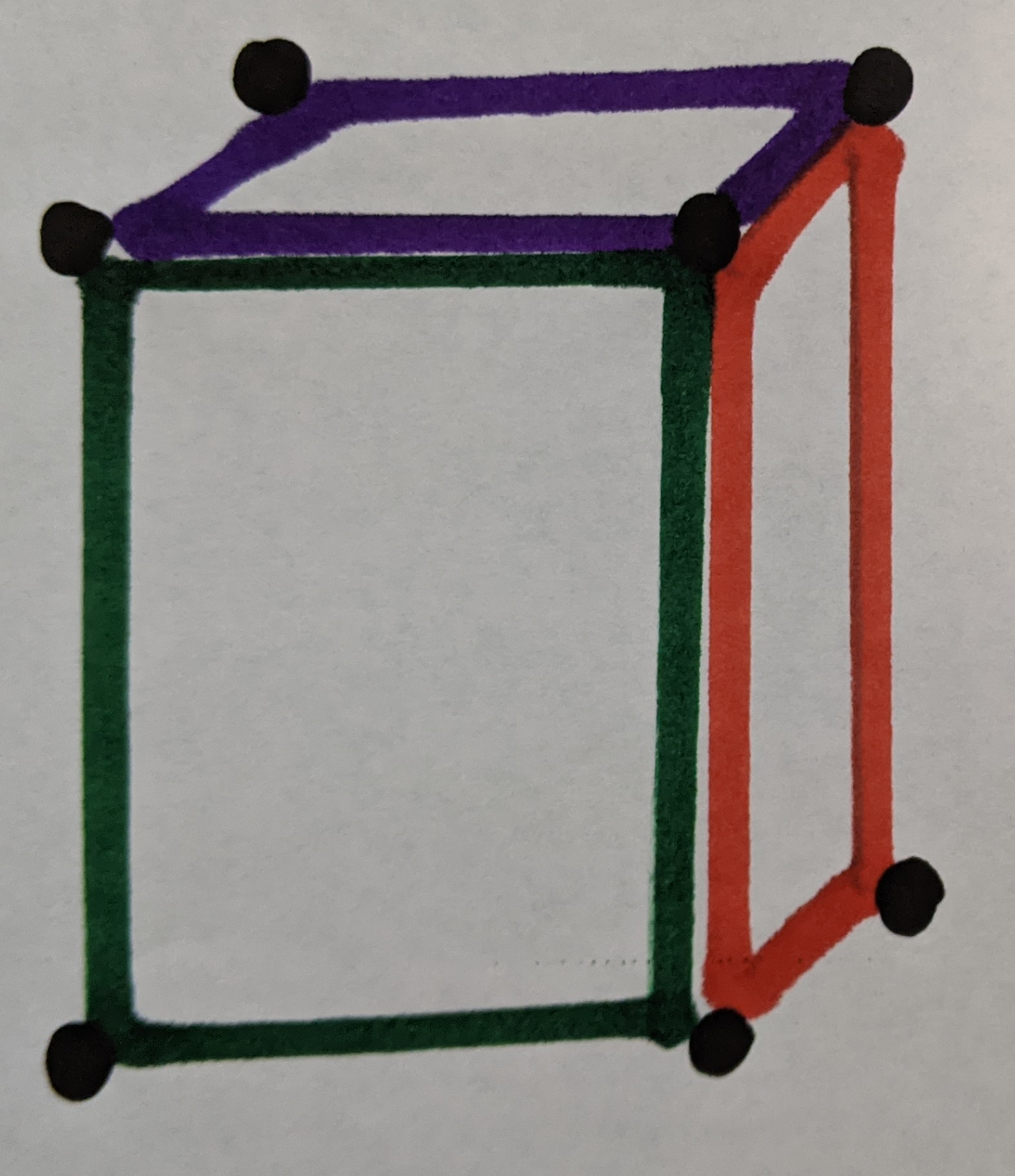
In fact, if you turn off your brain, it's just three weird polygons. And we can figure out the corners of the polygon. For example, I figured out these with a ruler, measuring they they are on the paper in centimeters.
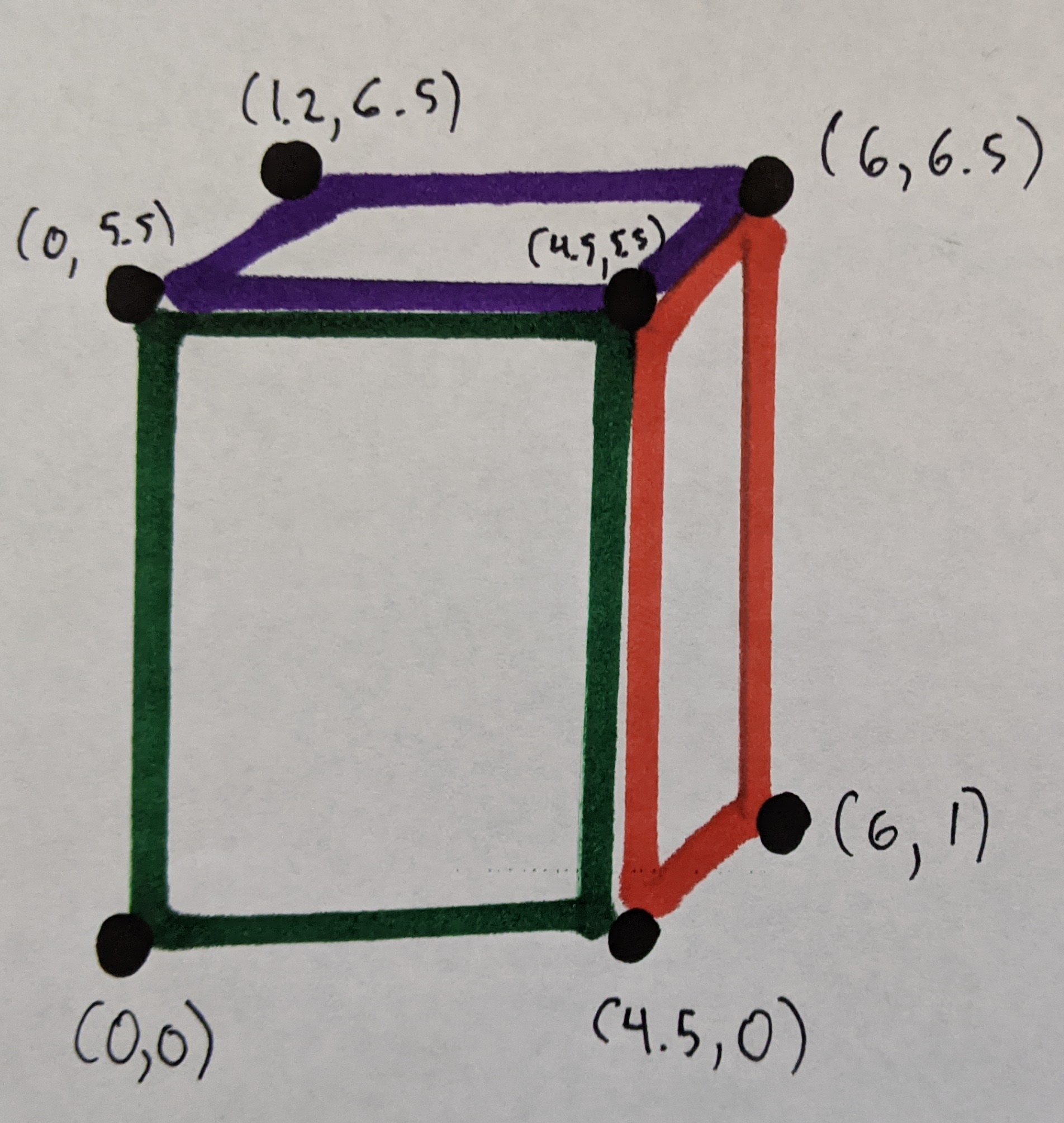
So to draw a cube, we just need to draw polygons. That's the essence of today's project.
Here's a minecraft world.
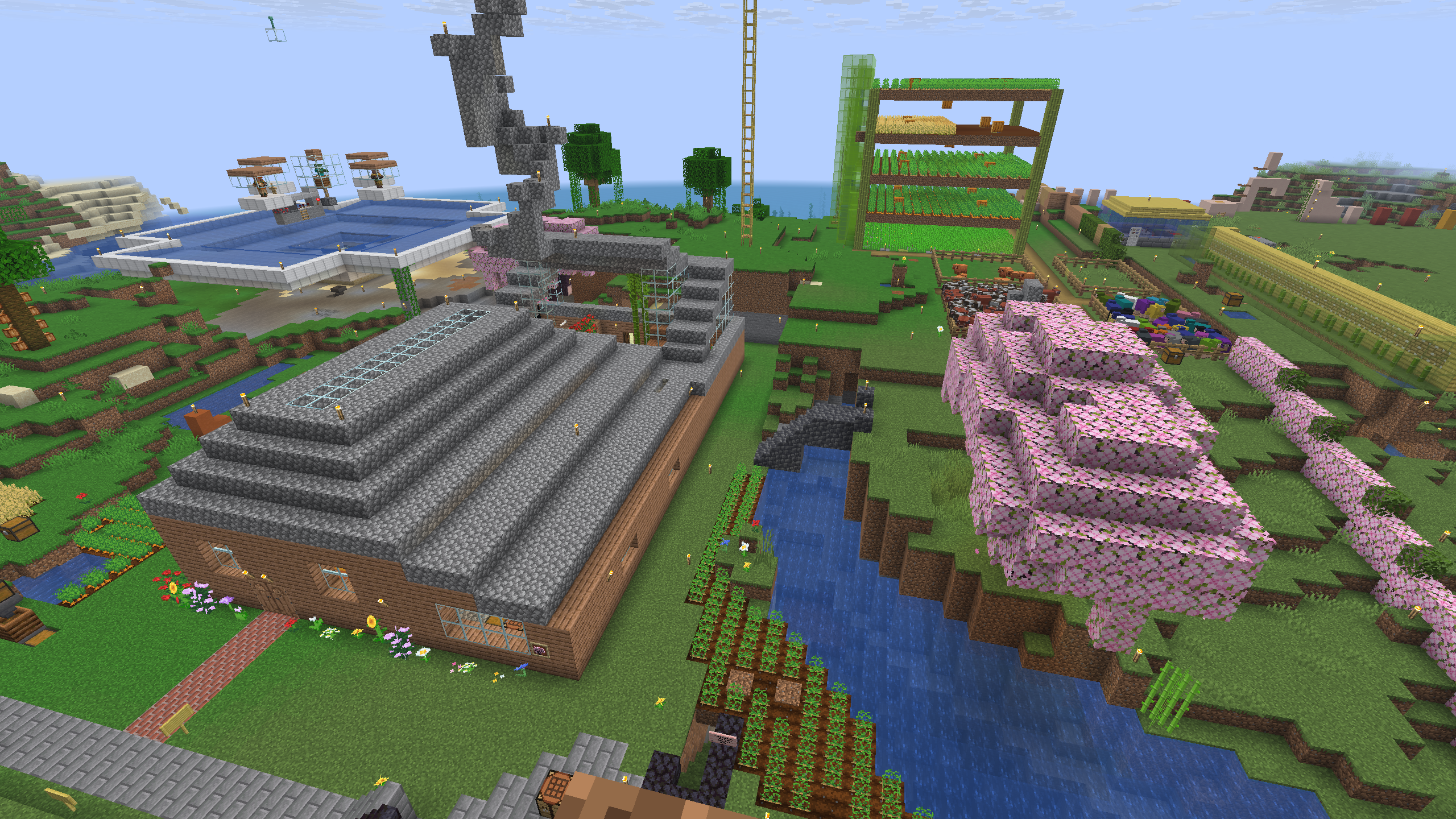
Here's the same thing in my voxel engine. If you squint, you might be able to recognize they're the same thing. Ignore the stripe at the top.
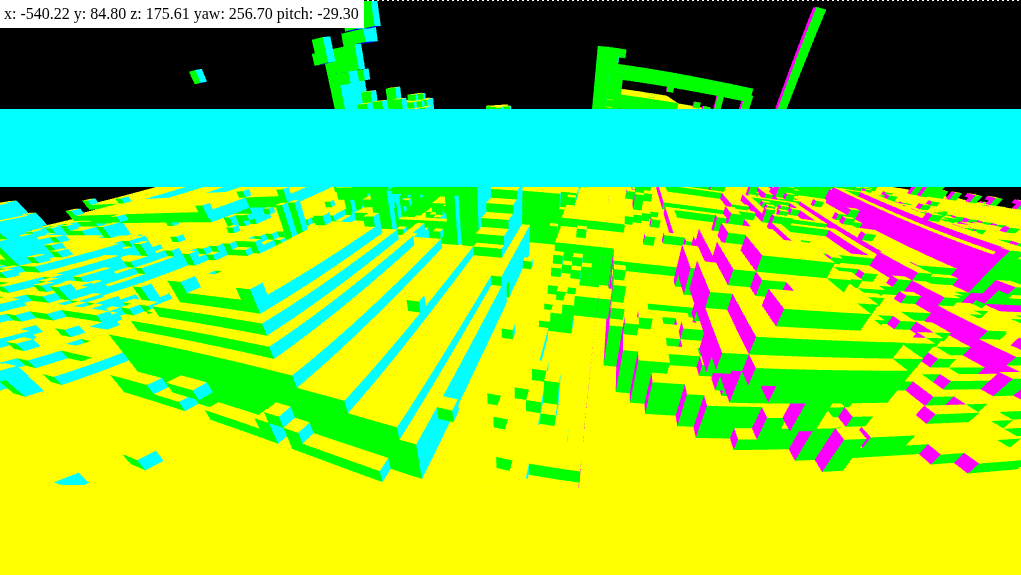
Here's a much simpler scene. If you click, you can explore it online
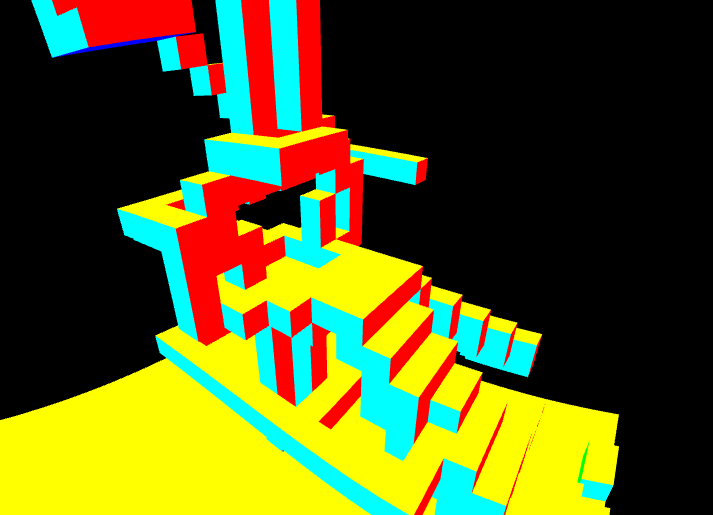
The source code is on github.
This hack wasn't perfect. There's some significant problems, and I worked on it 3 different days. Oh well, live and learn! I had fun.
Thanks to Claude for the code to extract minecraft data -- that was not the exciting part of this project.
The board game Go has been revolutionized in recent years by computer play. In 2016, AlphaGo beat Lee Sedol, a top Go player. This was the equivalent of what happened in Chess in 1997.
Since then, computers have continued to outstrip human players, but we have been learning a lot from Go engines. In this article I did some investigation using KataGo, which I understand to essentially be an open-source clone of the AlphaGo architecture.
This article assumes familiarity with the board game. If you're not familiar, I encourage you to give it a try sometime! Find a local try, or play online.
We have only one operation we can do. We can ask KataGo to analyze a position, and tell us how good that position is. That's the only operation we'll use in this article. And we're supposed to tell KataGo what the komi is.
KataGo returns two pieces of information for a position. An estimate of the score, and a percentage win chance.
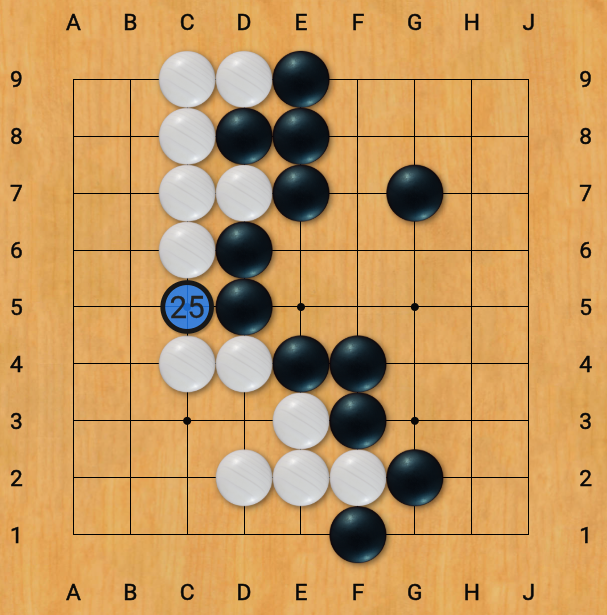
The estimate of the score is determined (according to my very poor understanding), using an estimator which looks at the board, but doesn't try any moves. This is a fast, but low-quality metric.
On the other hand, the win rate is detemined by, simplifying some details, trying playing the game a bunch of times really fast and seeing how often black wins. It's slower, but more accurate.
Our first question is: How much should komi be?
Using only our one tool, let's figure out what KataGo thinks.
Well, in theory, what does a "good" komi mean? It means black and white should both win about 50% of the time. So let's just guess every possible komi, and find the one with the closest to 50% win rate.
Or, we could use the fast score estimator on an empty board with zero komi. If it thinks black is ahead by 6.0, maybe we could set komi to 6.0.
| size | komi estimate (winrate) | komi estimate (neural) |
|---|---|---|
| 3 | +14.0 | +4.4 |
| 4 | +0.5 | +2.4 |
| 5 | +25.5 | +23.3 |
| 6 | +3.0 | +4.3 |
| 7 | +8.0 | +8.7 |
| 8 | +9.0 | +6.6 |
| 9 | +6.0 | +6.0 |
| 10 | +6.0 | +5.6 |
| 11 | +6.0 | +5.5 |
| 12 | +6.0 | +5.5 |
| 13 | +6.0 | +5.6 |
| 14 | +6.0 | +5.5 |
| 15 | +6.0 | +5.7 |
| 16 | +6.0 | +5.8 |
| 17 | +6.0 | +5.9 |
| 18 | +6.0 | +6.1 |
| 19 | +6.5 | +6.2 |
It turns out both methods give similar results. We're going to use the win rate method going forward, because in general I've been told it's more accurate for many board positions.
In fact, we can use the same method to evaluate any board position accurately. We can figure out what komi would make that board position 50-50 for white or black to win. And then we can treat that as the "value" of the position.
For the rest of the article, we're going to simplify, and only ask the value of board positions. We don't care which method we use, but I'll mark the fast-and-simple method as "neural", and the winrate method as "komi" or "winrate" in pictures.
Our next question is, what are different starting moves worth? Well, let's just play every one and see what KataGo says the score is.
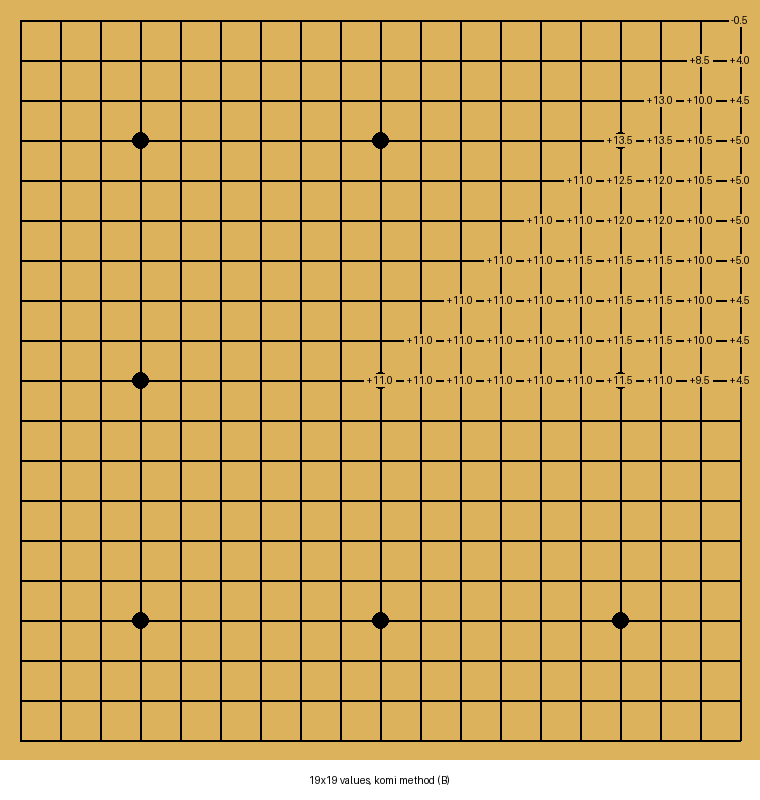
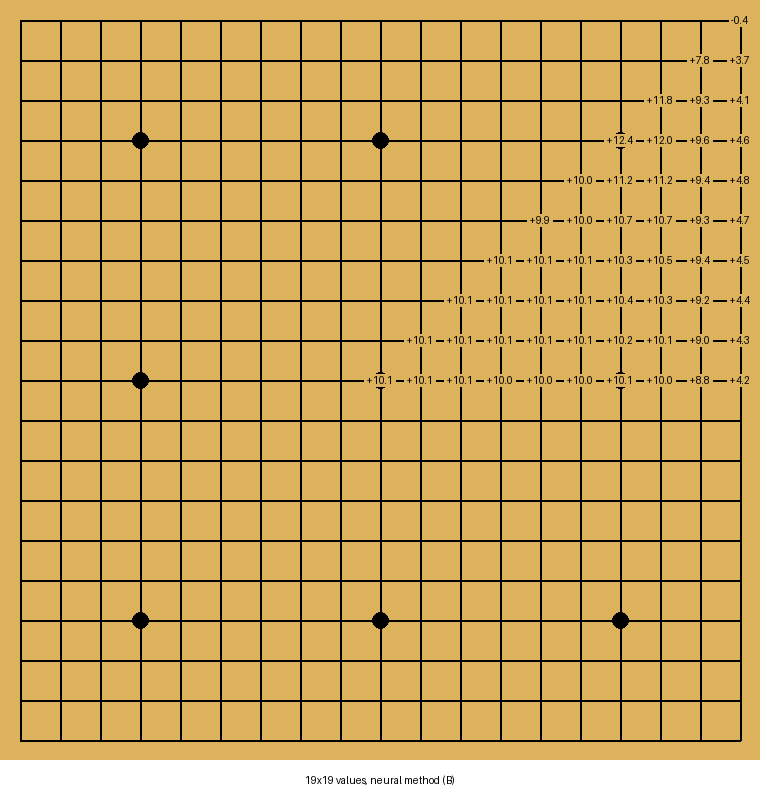
Note that all scores are relative to +6.5 for the empty board, which is why some values are negative.
Okay, easy enough. What about different numbers of handicap stones? Using standard placements, we get:
| size | handicap | value estimate (winrate) | value estimate (neural) |
|---|---|---|---|
| 19 | 1 | +6.5 | +6.2 |
| 19 | 2 | +20.0 | +19.2 |
| 19 | 3 | +32.5 | +32.5 |
| 19 | 4 | +47.5 | +46.6 |
| 19 | 5 | +59.5 | +58.3 |
| 19 | 6 | +72.5 | +71.8 |
| 19 | 7 | +86.0 | +85.1 |
| 19 | 8 | +100.5 | +100.3 |
| 19 | 9 | +115.5 | +114.7 |
| 13 | 1 | +6.0 | +5.6 |
| 13 | 2 | +19.5 | +18.6 |
| 13 | 3 | +32.5 | +30.7 |
| 13 | 4 | +48.0 | +47.4 |
| 13 | 5 | +59.0 | +58.6 |
| 13 | 6 | +75.0 | +74.5 |
| 13 | 7 | +87.0 | +84.0 |
| 13 | 8 | +100.5 | +96.1 |
| 13 | 9 | +109.5 | +102.3 |
| 9 | 1 | +6.0 | +6.0 |
| 9 | 2 | +16.0 | +16.0 |
| 9 | 3 | +27.5 | +27.1 |
| 9 | 4 | +75.0 | +53.5 |
| 9 | 5 | +74.5 | +79.0 |
Now let's make things more spicy. I keep winning every 1-stone game, but losing every 2-stone game. I want a 1.5 stone handicap. Well we can't add fractional stones, but we can look for something worth between 6.5 and 20 points.
Or, let's find something worth 0.0 points. I want a board position we can start with and not need that dumb komi rule.
Let's do the full analysis. Every possible starting board positions. Then we'll look for one that KataGo says is worth around... say, 12 points.
Of course, we can't really analyze every board position, so I just did ones with up to 2 stones. I included ones with white stones, because why not?
Here's what the ones with two black stones on 19x19 look like. It might take a bit to load, and you'll need to zoom in.
The full set of pictures is online.
19x19, positions closest to exact point values winrate
You can also get the raw score of 2-stone (and lower) positions on 9x9 and 19x19 boards. The code to do analysis and generate the pictures is on github, as are details on exact software settings used.
Thanks to Google for AlphaGo, and to lightvector for Katago (and Katago support).
Addendum.
After doing this project, I found it had already been done (better) at katagobooks.com. Apparently what I've done is called an "opening book", even if my goal was a bit different.
In 2022, 2023, and 2024, I did "Hack-a-Day", a challenge to myself to do one project a day for all of November. It's vaguely modelled off NaNoWriMo, a challenge to write a book in November.
This year, I completed 21 projects in 30 days. On average, I worked 7.5 hours per project. My expenses for the month were $130, divided over only three projects--ingredients for Project L.E.M.B.A.S. ($85), aluminium to mill for soma cubes ($28), and missing parts for my TODO whiteboard ($19).
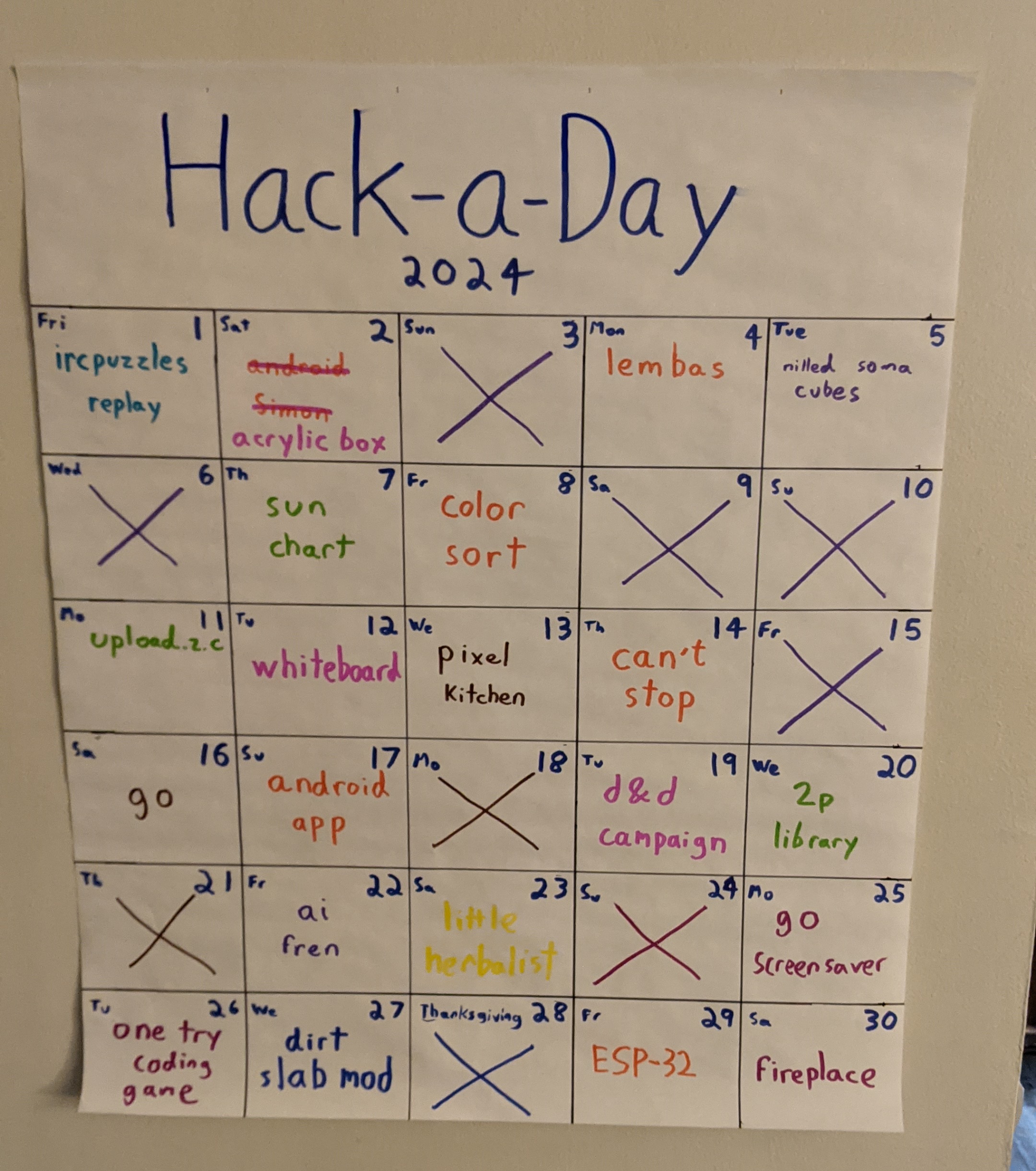
To see a list of all projects from this year and previous ones, check out my hack-a-day website.
Having prepped my ESP-32, I decided to make an LED fireplace today.
The plan was to put an LED strip on a piece of cardboard, and have slowly shifting red, orange, and yellow lights going up and down, somewhat like a music visualizer. I knew the bare LEDs wouldn't look good, so the plan was to put the cardboard somewhat deep into the fireplace, and add some translucent tissue paper layers in front to diffuse the lights.
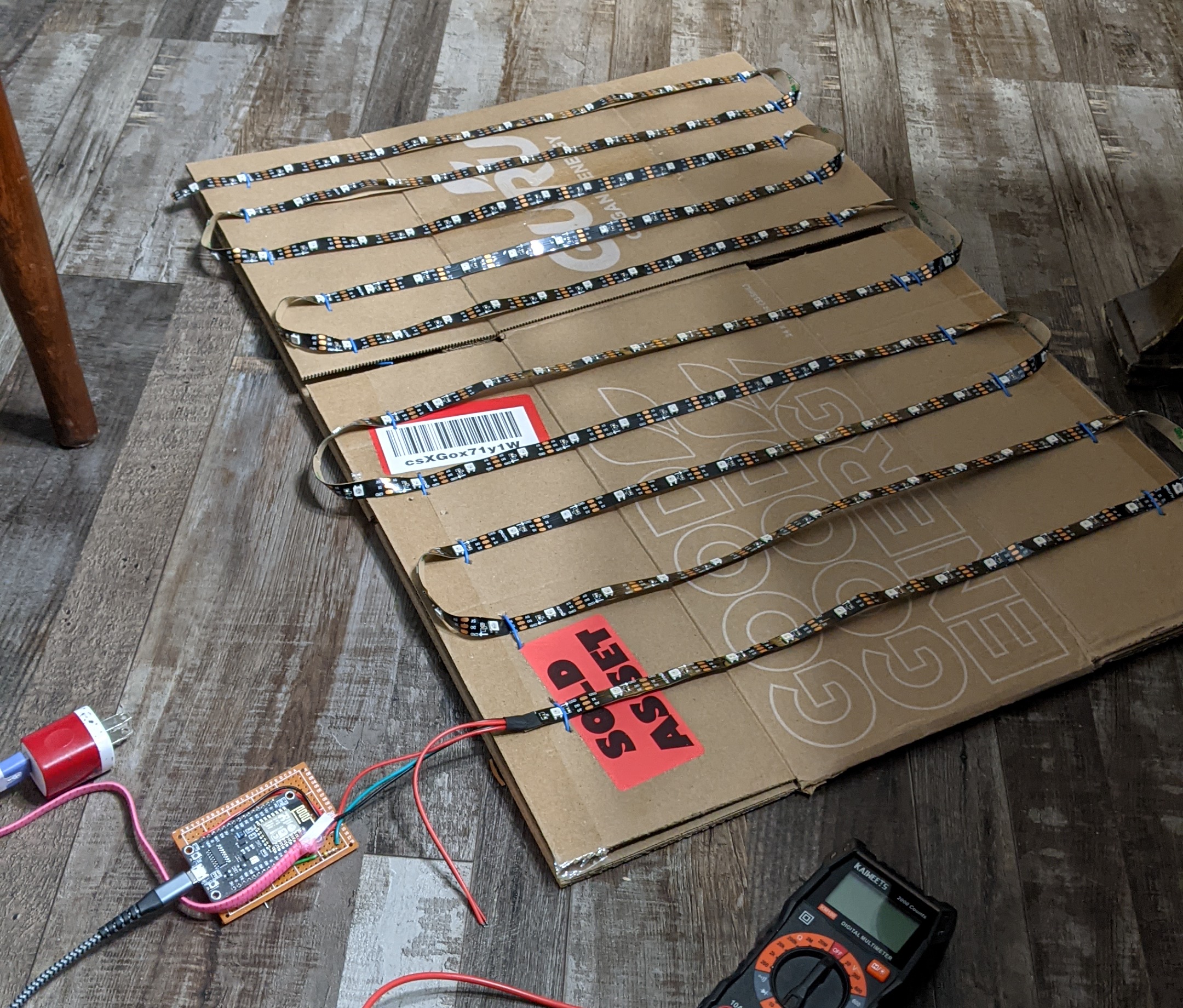
Sadly, of my three ESP-32s, two were broken. I ended up instead using an ESP-8266, since I had several laying around. Annoyingly, the boards I have are so wide it's impossible to breadboard the, so I used perfboard instead.
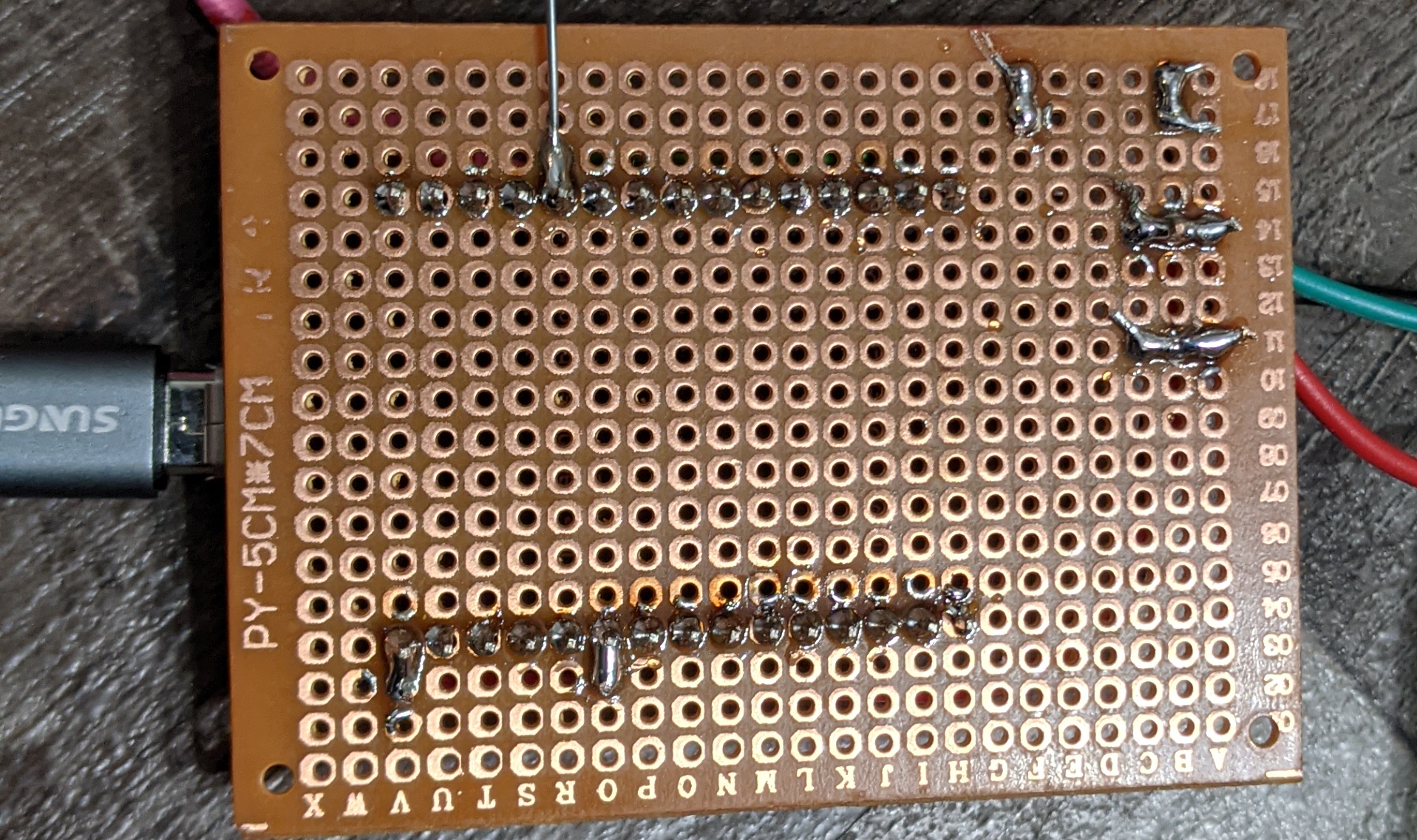
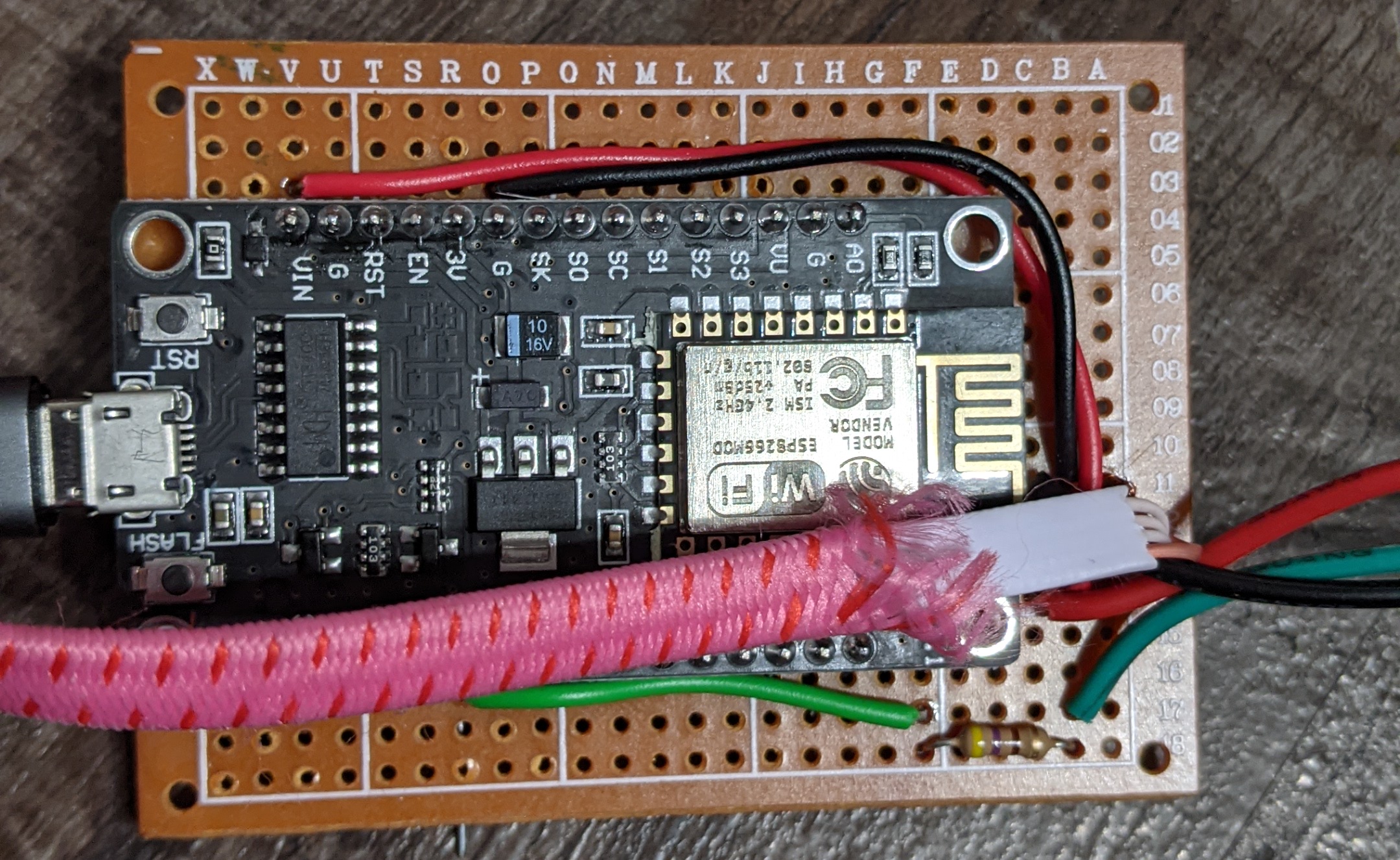
Having carefully set up the circuit, I flipped the on switch and... nothing happened. It was about 10pm at this point, and I was starting to run out of energy, so I gave up.
Very late that night, I found the problem was the resistor I added--the LED strip has a built-in resistor as well, and apparently the two together were too much. I eventually got the lights to turn on, but too late to finish the project for the day.
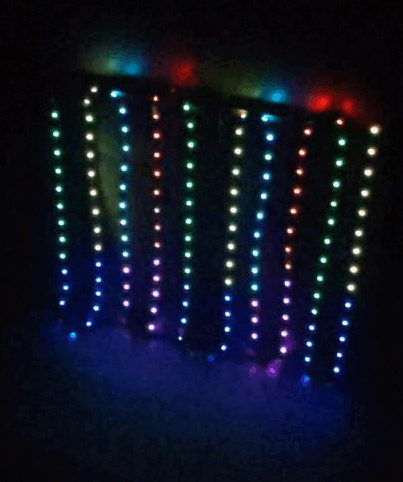
A while back, I was trying to set up a power monitoring system, and I mistakenly bought the wrong ESP dev board. The ones I ended up are sold by some fake-named Chinese manufacturer. They seem pretty fine, much like any other ESP32 dev board, but they have an unusual 30-pin layout.
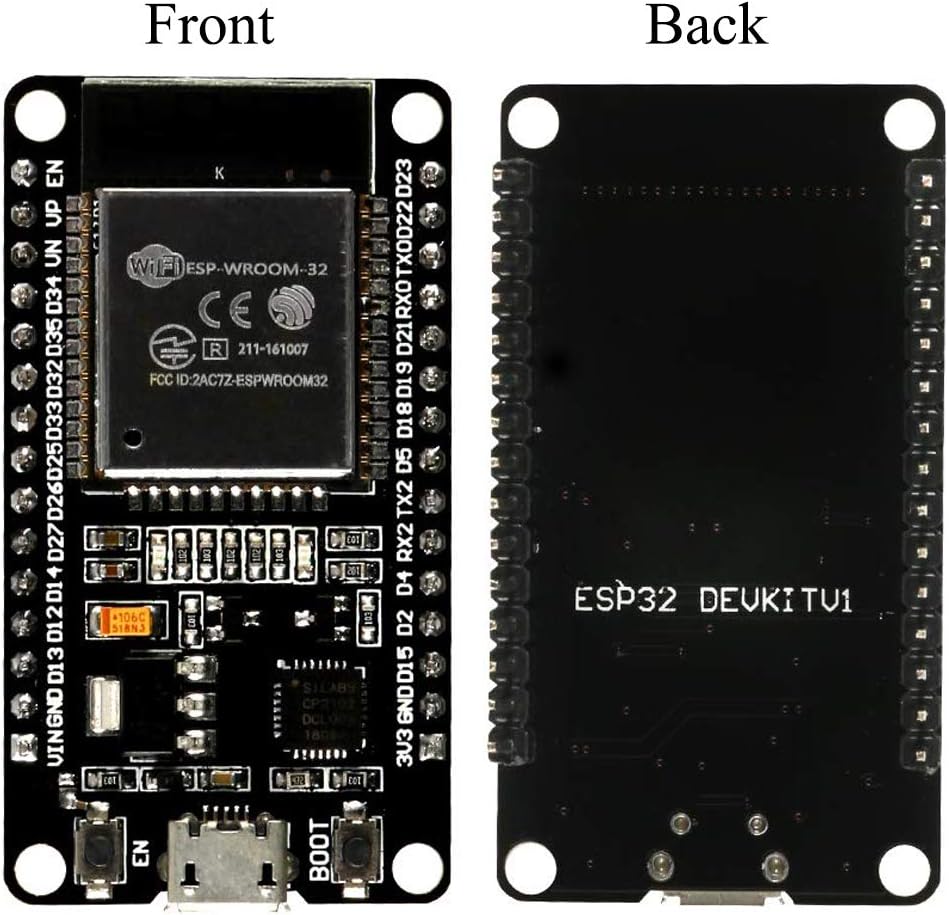
I tried to add some electronics to my whiteboard hack earlier this month, but got frustrated pretty quickly, failing to program the microcontroller, and with no idea what the pinout was.
Today I decided to take it slower. I'd figure out how to program it, and understand the pins. If I had any time left over, I'd do a project.
First, I got flashing the chip to work. It turns out my main problem from the first time was a bad upload serial rate. I debugged the problem with the help of friendly folks on IRC. Espressif (the ESP32 manufacturer) has helpful troubleshooting instructions, which suggest using the python serial terminal, miniterm. By taking a step at a time, I got the microcontroller working.
Next, I installed and set up platformio, which I had never used before. My experience was that it was pretty good once set up, but a little hard to get started on the command line. Still, I'm happy, and will probably use it again. Platformio has two options--the popular Arduino framework libraries, or the Espressif-provided esp-idf libraries. Based on the small code samples I found, I'll most likely use the Arduino libraries, but some specialty features are just not available on Arduino.
Finally, I set up platformio one last time, with the VS-Code based PlatformIO IDE. Again my experience was pretty good. Sadly, the open-source VS-Code does not show the same set of extensions, and I had to use the binary version. (Aside: Come on, vs-code. Don't call your package and program code. That's a dick move.)
The writeup of how to get your dev environment set up is on github.
Finally, I made the below pinout diagram with the rest of my night.
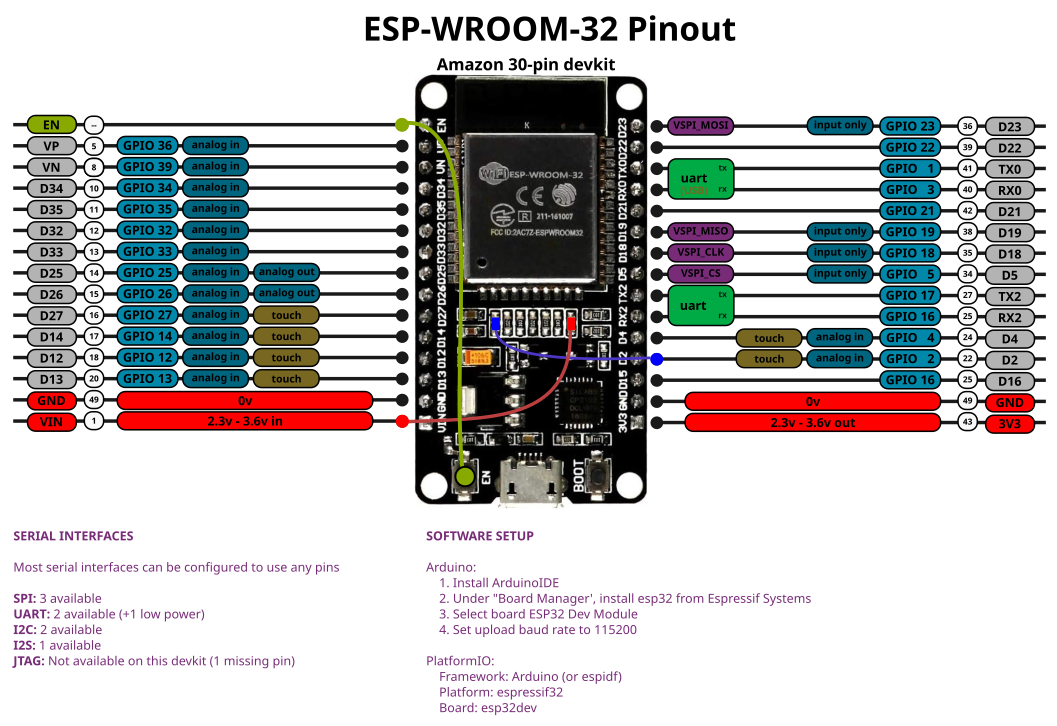
Happy hacking!
Today I made a minecraft mod, using Fabric. Modding sure has changed a lot since I last tried it in Forge, maybe ten years ago! Java's changed a little too, even.
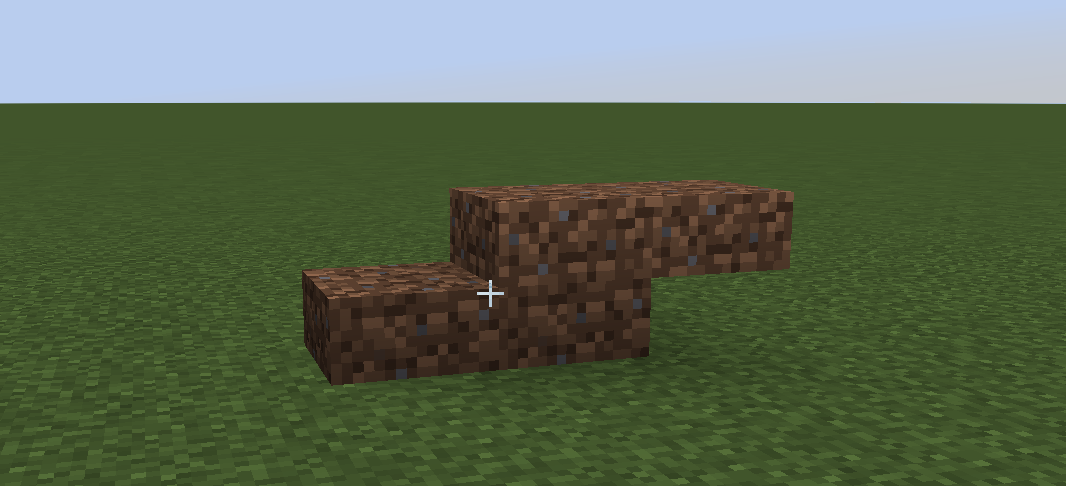
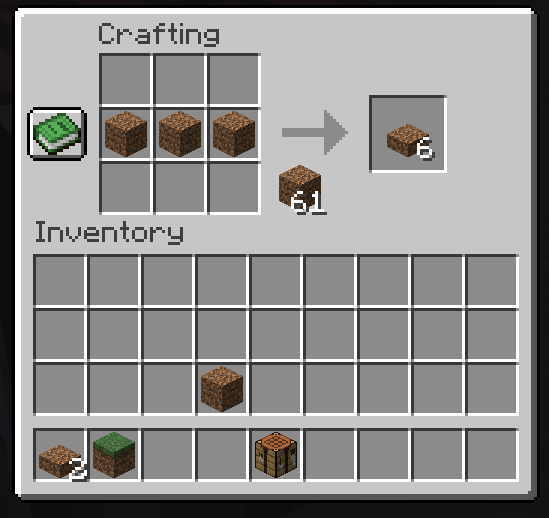
My mod adds a dirt slab, that's it. I didn't really have time to get past the basics, but I think the occasional hack that's just a learning experience is okay.
Code and mod download are both on github this time.
Fabric is well-documented and friendly. The main downside is that there's no "abstraction later" between Minecraft and the mod. This means your mod will work with exactly one minecraft version on release. Additionally, when a new version of minecraft is released, you need to update and re-release your mod (and there are usually actual changes to be made).
Tutorials used: